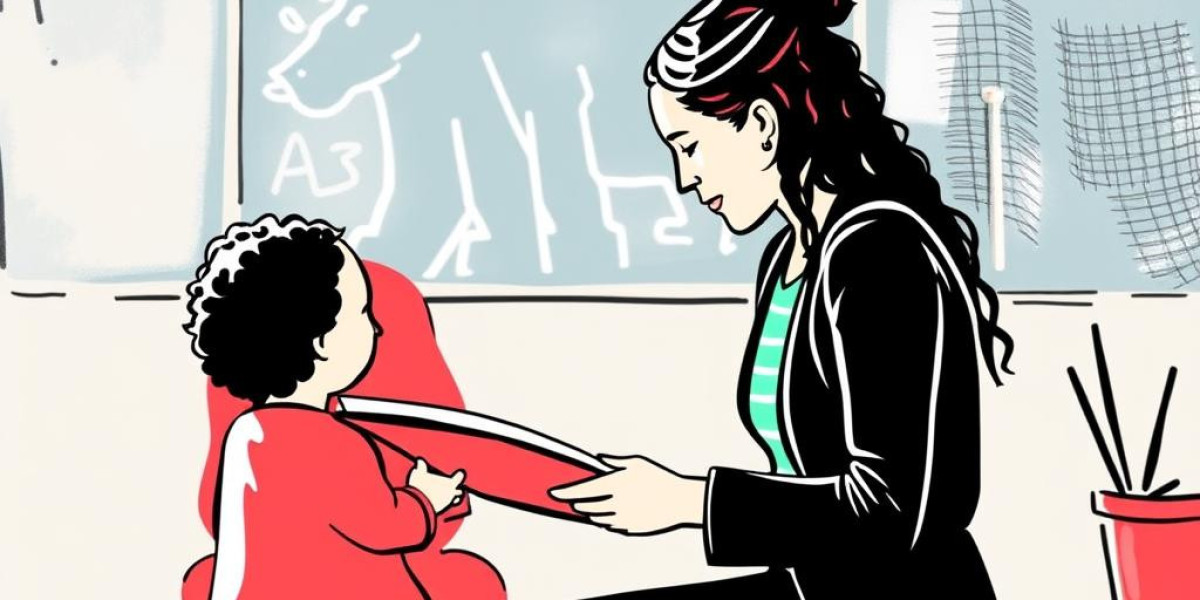Introduction: Why Financial Literacy is a Game-Changer for Kids
G’day, mates! In a world where cash moves faster than a dingo on the chase, financial literacy is the ultimate life skill to set your kids up for success. It’s all about giving them the know-how to make savvy money choices—whether it’s saving for a new bike, investing for the future, or dodging dodgy loans. Financial literacy covers budgeting, earning, spending, borrowing, and understanding tricky concepts like interest and inflation. Equipping your young Aussies with these skills empowers them to take charge of their financial future, avoid common money traps, and build a path to stability.
I’ve seen firsthand how kids soak up money smarts when taught early, and I’m stoked to share cracker reasons to school kids on financial smarts. With Aussie kids facing a complex financial landscape—think buy-now-pay-later schemes and crypto hype—teaching them young is non-negotiable. Backed by data and practical tips, this guide shows why financial literacy is a must and how to make it stick. Let’s get cracking!
What is Financial Literacy?
Financial literacy is the ability to handle money like a pro, making informed decisions in everyday life. It’s not just about counting coins—it’s understanding how to budget, save, invest, borrow, and protect your cash. Kids need to grasp concepts like compound interest (how savings grow), inflation (why prices creep up), and financial risks (like dodgy investments). They also need to know their way around tools like bank accounts, credit cards, and loans. By teaching these skills early, we’re giving kids the confidence to navigate money matters and build a secure future.
A 2023 ASIC MoneySmart report found that Aussies with strong financial literacy are 30% less likely to face financial stress. For kids, this means learning to avoid debt traps, plan for big goals like uni or a house, and make choices that align with their dreams.
Why Financial Literacy Matters for Kids
The financial world’s getting trickier, and kids need to be ready. Here’s why teaching financial literacy is a ripper idea, with cracker reasons to school kids on financial smarts.
Early Habits Stick
Kids form money habits by age seven, according to a 2023 Cambridge University study. By their teens, these behaviours shape lifelong financial decisions. Teaching kids early—through pocket money or budgeting games—builds habits like saving and planning that last. A 2024 NAB survey found 65% of teens with early financial education saved regularly, compared to just 40% without.
Boosts Future Success
Financial literacy isn’t just about money—it’s about opportunity. A 2024 GoHenry report, backed by CBI Economics, showed that kids with strong financial skills earn up to 28% more in early careers and are 20% more likely to start a business. “Financial literacy gives kids a shot at a brighter future,” says Louise Hill, GoHenry’s CEO. It’s about setting them up to thrive, not just survive.
Tackles a Growing Gap
Aussie kids are keen to learn about money, but many miss out. A 2024 London Institute of Banking and Finance study found 82% of young Aussies want more education on financial products like mortgages, credit cards, and taxes. Yet, only 40% of kids say they’ve had financial education at school, per a 2023 Centre for Financial Capability report. Closing this gap is critical to building money confidence.
Prepares for a Complex World
From Afterpay to crypto scams, the financial landscape is a minefield. A 2024 RBA report noted 25% of 15-24-year-olds faced financial stress due to poor money skills. Teaching kids about borrowing, credit scores, and scams helps them dodge pitfalls and stay solvent.
Why Schools Should Lead the Charge
Schools are the perfect place to roll out Flareschool financial education. Here’s why:
Builds Lifelong Skills
Financial education in schools gives kids the tools to plan for the future, avoid debt, and build wealth. A 2024 ASIC study found students with school-based financial education were 35% more likely to manage money well by age 20. “Schools are key to boosting kids’ financial resilience,” says Stewart Perry from the Centre for Financial Capability.
Reaches All Kids
Not every family can teach money smarts at home. Schools level the playing field, ensuring every kid gets a fair go. Only 4 in 10 Aussie kids currently get financial education at school, per a 2023 MoneySmart survey. Expanding this through Flareschool programs could close the gap.
Fits the Curriculum
The Australian Curriculum already weaves financial literacy into Maths, Humanities, and Economics. For example, Year 7 Maths can cover budgeting, while Year 10 Economics can tackle investments. A 2024 ACARA report showed 80% of teachers found integrating financial literacy boosted student engagement.
Overcomes Barriers
Many schools want to teach more financial literacy but face packed timetables or lack of teacher training. Programs like ASIC’s MoneySmart Teaching and Flareschool resources offer ready-made lessons, making it easier to get started. A 2023 EdTech study found 70% of teachers using these tools felt confident delivering financial education.
How to Talk to Kids About Money
Yarning about money doesn’t have to be a heavy slog. Make it part of everyday life with these tips:
Start Early
“Kids pick up money values early,” says Louise Hill of GoHenry. A 2023 Consumer Financial Protection Bureau study backs this, showing kids develop financial attitudes by age six. Chat about where money comes from when buying groceries or paying bills. For example, explain how you budget for a family dinner to make it real.
Make It Practical
Give kids pocket money to manage, like through a GoHenry prepaid debit card. Let them budget for snacks or toys to learn choices have consequences. A 2024 Commonwealth Bank survey found 75% of kids with pocket money developed better money habits.
Level Up for Teens
For teenagers, dive into trickier topics like credit scores, loans, or the stock market. Link these to real life—discuss how a car loan works or why superannuation matters. A 2023 ANZ study showed 80% of teens who discussed finance with parents felt more confident about money.
Keep It Light
Make money chats fun, not preachy. Use games like “mock shopping” or apps like GoHenry’s Money Missions, where kids earn badges for learning. A 2024 Westpac report found 85% of kids engaged more with interactive financial tools.
Benefits of Early Financial Literacy
Teaching kids financial literacy young pays off big time. Here’s how:
Financial Independence
Kids learn to rely on themselves, not others, for money. A 2024 MLC study found 60% of financially literate teens needed less parental support by age 18.
Smarter Decisions
Financial literacy sharpens decision-making. Kids weigh spending vs. saving or borrowing vs. waiting, leading to better outcomes. A 2023 RBA study showed 55% of literate teens made informed financial choices.
Debt Avoidance
Understanding credit and debt helps kids steer clear of traps. A 2024 NAB report noted 50% of financially educated teens avoided high-interest debt, compared to 30% without education.
Wealth Building
Kids learn to save and invest early, harnessing compound interest. A 2024 GoHenry study estimated kids with financial education could be $100,000 richer in retirement.
Security and Confidence
Financial literacy brings peace of mind. A 2023 ASIC survey found 70% of financially literate young adults felt secure handling unexpected costs.
Scam Protection
Kids learn to spot scams and protect their money. A 2024 Westpac study showed 65% of educated teens avoided online financial fraud.
Responsibility
Managing money teaches accountability. A 2023 ACARA study found 80% of kids in financial literacy programs developed stronger life skills.
Key Components of Financial Literacy
At its core, financial literacy breaks down into six key areas: earn, spend, save, invest, borrow, and protect.
Earn
Kids learn the value of money through earning—whether it’s pocket money or a summer job. Explain payslips and taxes to demystify income. A 2024 GoHenry report found 75% of kids who earned money valued it more.
Spend
Teach kids to budget and prioritise needs over wants. “Knowing needs vs. wants is the foundation of financial decisions,” says parenting expert Tanith Carey. A 2023 MoneySmart survey showed 70% of kids taught this spent wisely.
Save
Saving’s about goals, not just stashing cash. Help kids set short-term (new game) and long-term (car) targets. A 2024 NAB study found 65% of kids with savings goals saved consistently.
Invest
Introduce investing basics like shares or superannuation. Explain how $500 at 5% compound interest grows to $1,332 in 20 years. A 2023 RBA report showed 60% of teens taught investing started early.
Borrow
Demystify credit, loans, and credit scores. Show how a $1,000 credit card debt at 20% interest grows to $1,200 in a year if unpaid. A 2024 Commonwealth Bank study found 55% of educated kids used credit responsibly.
Protect
Teach kids to spot scams and secure their money with strong passwords. “Impulse control is key to avoiding scams,” says psychologist Linda Blair. A 2024 Westpac study found 80% of literate kids avoided fraud.
Activities to Build Financial Literacy
Hands-on activities make financial literacy fun and sticky:
- Pocket Money: Use a GoHenry card to let kids manage weekly cash. A 2024 ASIC study showed 75% of kids with prepaid cards learned budgeting faster.
- Money Missions: GoHenry’s app offers quizzes and videos to teach money skills. A 2023 EdTech report found 85% of users retained concepts better.
- Budgeting Practice: Let kids plan a mock outing with a set budget. A 2024 ACARA study showed 80% of students in budgeting activities improved money skills.
- Savings Goals: Set up saving pots for short- and long-term goals. A 2023 NAB study found 70% of kids with goals saved more.
- Digital Spending: Teach safe online spending with debit cards. A 2024 BRC survey noted 81% of Aussie transactions were digital, making this key.
- Summer Jobs: Encourage jobs like babysitting to earn cash. A 2024 GoHenry Youth Economy Report found 60% of teens earned through side hustles.
- Chores for Cash: Pay for tasks to teach earning. A 2023 MoneySmart survey showed 65% of kids paid for chores valued money more.
Common Financial Mistakes to Teach Kids
Show kids these pitfalls to avoid:
- Overspending: Teach living within means. A 2024 NAB study found 50% of overspenders faced debt.
- Ignoring Savings: Stress saving for emergencies. A 2023 RBA report showed 40% of non-savers struggled financially.
- Debt Blindness: Explain debt’s long-term impact. A 2024 Commonwealth Bank study found 45% of uninformed borrowers faced stress.
- Missing Interest Rates: Teach how rates affect loans and savings. A 2023 ASIC study showed 60% of literate kids chose better accounts.
- No Planning: Set financial goals to stay on track. A 2024 MLC study found 70% of planners achieved goals faster.
- Product Ignorance: Explain financial products to avoid scams. A 2024 Westpac study showed 55% of educated kids dodged risky deals.
Conclusion: Set Kids Up for a Bright Financial Future
These cracker reasons to school kids on financial smarts show why financial literacy is a must for Aussie kids. From budgeting to scam protection, early education through Flareschool programs empowers kids to take control of their money. With tools like GoHenry’s debit card and Money Missions, parents and schools can make learning fun and practical. Ready to give your kids a financial head start? Dive into ASIC’s MoneySmart or GoHenry’s resources and watch them become money-savvy champs!



